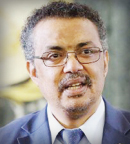THE WORLD HEALTH ORGANIZATION (WHO) has launched the Global Strategy to Accelerate the Elimination of Cervical Cancer, outlining three key steps: vaccination, screening, and treatment. Successful implementation of all three could reduce more than 40% of new cases of the disease and 5 million related deaths by 2050.
This historic milestone marks the first time that 194 countries have committed to eliminating a cancer, following the adoption of resolution at this year’s World Health Assembly. Meeting the following targets by 2030 will place all countries on the path toward elimination:
- 90% of girls fully vaccinated with the human papillomavirus vaccine by 15 years of age
- 70% of women screened using a high-performance test by age 35 and again by 45
- 90% of women identified with cervical disease receive treatment (90% of women with precancerous conditions treated and 90% of women with invasive cancer managed).
The strategy also stresses that investing in the interventions to meet these targets can generate substantial economic and societal returns. An estimated $3.20 million will be returned to the economy for every dollar invested through 2050 and beyond, owing to increases in women’s workforce participation. The figure rises to $26 million, with consideration of the benefits conferred by women’s improved health on families, communities, and societies.
Battling a Rising Tide

Tedros Adhanom Ghebreyesus, MD
“ELIMINATING ANY CANCER would have once seemed an impossible dream, but we now have the cost-effective, evidence-based tools to make that dream a reality,” said WHO Director-General Tedros Adhanom Ghebreyesus, MD. “But we can only eliminate cervical cancer as a public health problem if we match the power of the tools we have with unrelenting determination to scale up their use globally.”
The strategy is launched at a challenging time, however. The COVID-19 pandemic has posed challenges to preventing deaths due to cancer, including the interruption of vaccination, screening, and treatment services; border closures that reduce the availability of supplies and that prevent the transit of skilled biomedical engineers to maintain equipment; new barriers preventing women in rural areas from travelling to referral centers for treatment; and closures that interrupt school vaccine programs. To the extent possible, however, WHO urges all countries to ensure that vaccination, screening, and treatment can continue safely, with all necessary precautions.

